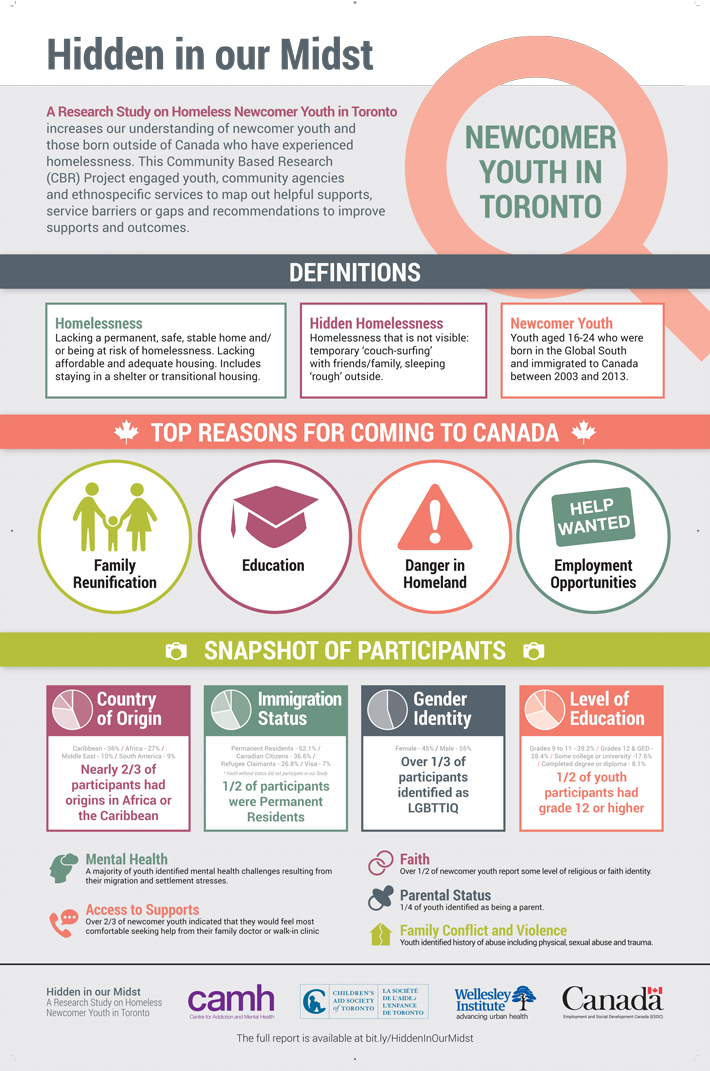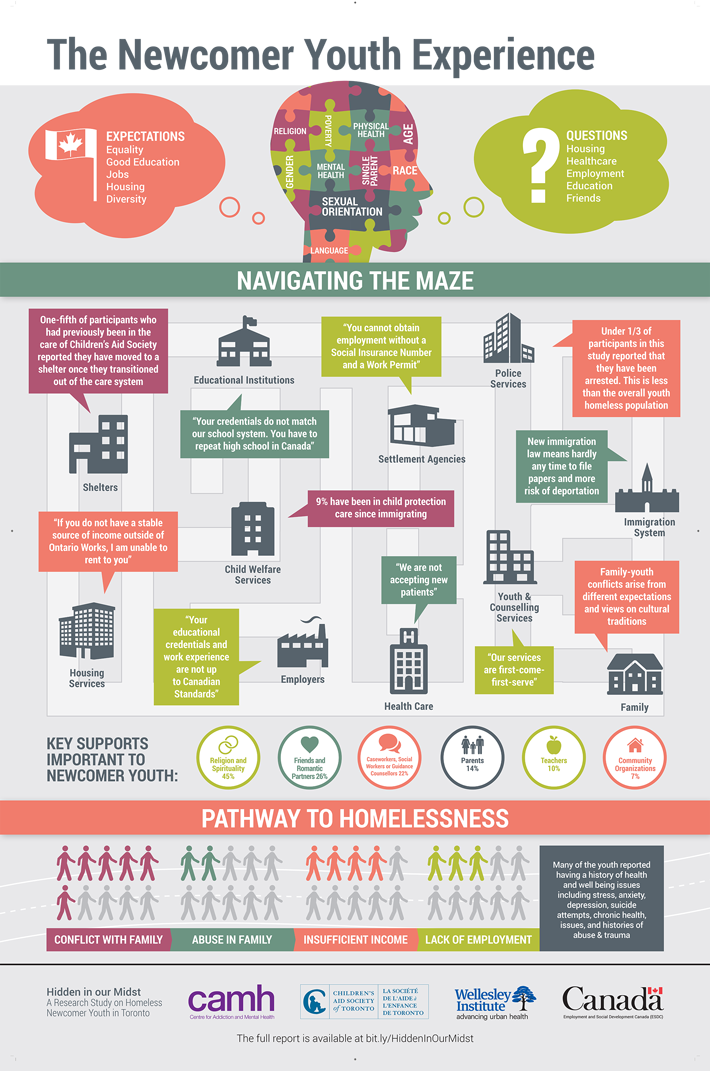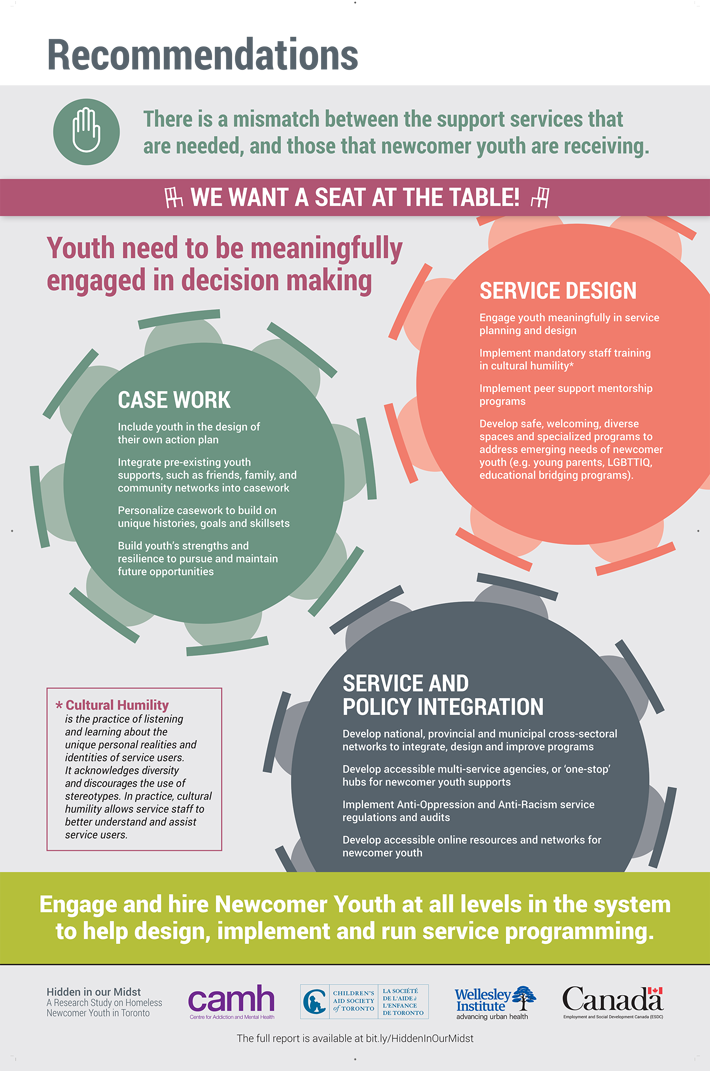Youth represent the fastest growing segment of Canada’s homeless population, and a large proportion of these homeless youth are newcomers. Data from a recent survey conducted with homeless youth in Toronto shows that 22.3% of those surveyed had been born outside of Canada. The below infographic, created by the Centre for Addiction and Mental Health (CAMH) and the Children’s Aid Society of Toronto for their report on homeless newcomer youth in Toronto, looks into the experiences newcomer youth have with homelessness and provides recommendations to change the status quo. When I looked at the snapshot of survey participants, two things jumped out at me.
In the study, over one third of participants identified as LGBTTIQ. LGBTTIQ youth, because of their gender identity, are far more likely than straight youth to be the victim of further discrimination and physical violence within the shelter system. This highlights the urgent need for specialized services for LGBTTIQ youth in major urban centres like Toronto. To date, there are zero specialized initiatives directed at the needs of LGBTTIQ homeless youth in Canada.
The infographic also states over half of youth participants had a level of education of grade 12 or higher. It says youth who have credentials that do not match Canadian school systems may be told that they have to repeat high school in Canada. As well, work experience that youth may have is often discredited as being ‘not up to Canadian standards.’ Rather than being told that they need to start over from scratch, the presence of bridging programs and supports that would help link these youth up with other educational supports could do a great deal to help these youth.
Despite the high proportion of homelessness youth who are also newcomers, data about the needs and experiences of these youth is hard to come by. Engaging these youth in decision-making processes about how services are structured and designed will go a long way towards creating informed changes to how we provide supports to this group. This means including youth in the design of targeted action plans, identifying which tailored supports are most needed and developing safe spaces in which these youth can voice their ideas and concerns. Advocating for, and supporting, specialized programs that demonstrate commitment to newcomer youth living in critical housing situations is one way to bridge the gaps present in their social safety net.
Access the PDF version of the above infographic.



